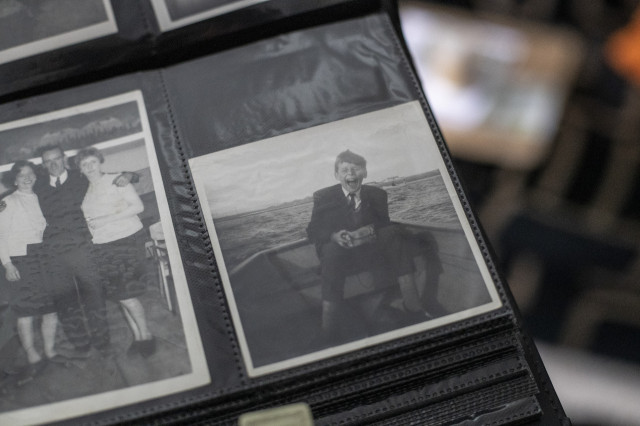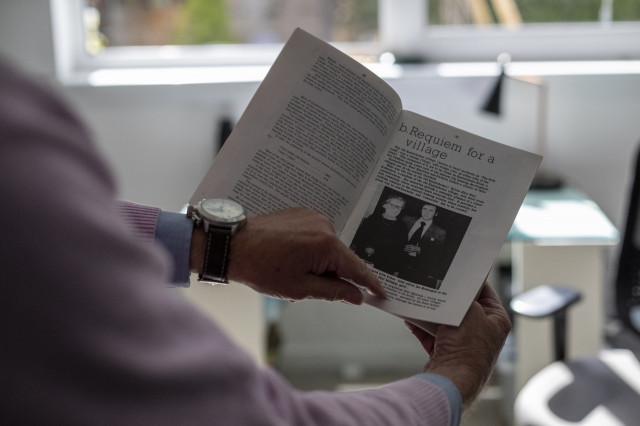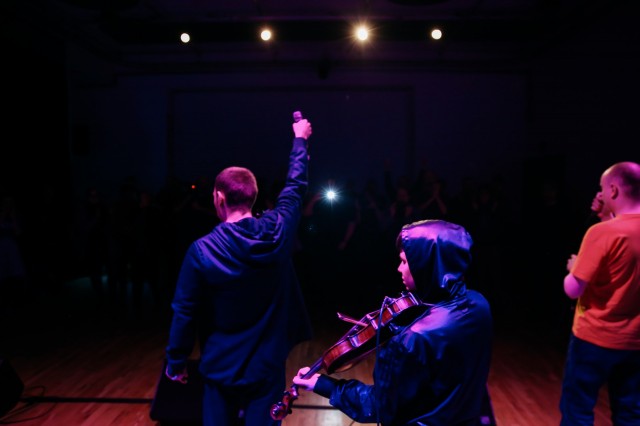
Platform's drama group for 8-11 year olds prepare for their latest show








Last year we spoke to local east end resident Ian Monteague about his memories of growing up in Easterhouse...
“My Easterhouse story began in the bitter winter of 1959 aged 8. Truth is it felt a bit like being sent to live in exile. Life, had for me, begun in a single end in Glasgow’s Gorbals in 1951 - five of us in one room and an outside toilet.
Glasgow was beginning to undergo a redevelopment of the city’s slum housing and folk were being rehoused in one of four new housing schemes. My mother was told to visit the housing office to ballot for which flat would eventually become ours and this was done by the random choosing of a rent book.
A two-bedroom flat with sitting room, kitchen and inside bathroom was ours and despite not being able to afford floor coverings nor furniture and beds for each room, it felt like a dream come true!
My 60 year adventure of travelling ‘Easterhouse’s River of Life’ (sinking down, bobbing up, floating, coasting & thrashing around) had well and truly begun. In many ways it was a bit disorientating: far from our old life, jobs, family, friends and safety …it was facing the unknown.
But newness brings hope and excitement so, for most people (especially children) the early days were good. Then, the reality of living kicked in. Rents were many times more than the cost folk had been used to and together with food, heating, clothing and travel costs many found themselves in dire straits. Too many had to face the ignominy of a warrant sale where household goods were put on the pavement to be sold off to pay debts.
Many became adept at pretending not to be home when the rent or debt collector called. Heating and furnishing houses to fulfil the dream of cosy homes was challenging and was only possible with the arrival of warehousemen who would sell various household items on ‘tic’ (credit) and ‘Provy’ cheques for school uniforms and Christmas. These were often at exorbitant interest rates.
Regrettably, after four or five years, the dream began to fade for many who longed to be back in their ‘auld’ place where there were cinemas, shops, access to town, relatives and more jobs. By this time Greater Easterhouse had an estimated 60,000 people trying to make a life for their families in an often culturally barren environment.
Unrest, gangs and sensationalist reporting in the press led to our scheme becoming infamous throughout the UK and parts of Europe - many local people felt the need to disguise where they lived when applying for jobs.
I was moved recently by a quote from a New York priest who visited Glasgow. He said ‘The world we need is one where compassion stands in awe at the burdens the poor have to carry, rather than stands in judgement at the way they carry them’. Our own authorities were sleepwalking through our plight. During the early 1960’s there was much part-time primary education due to teacher and accommodation shortages.
My school was Bishoploch Primary School which was, at one point, Europe’s largest primary school with several annexes. Three secondary schools opened: Westwood, St Leonard’s and Lochend and provided some community space and activities – the latter which was not always to the liking of teenagers as youth clubs came later.
There were also many success stories. With great encouragement and support I myself went on to teach at Eastbank, Lochend and St Leonard’s. Local churches working together were, and remain, at the forefront of supporting our communities: providing halls and personal support and really are organisations for all ages. Above all they were able to articulate peoples’ cases in trying to improve their situation – this could be a slow process and by the mid 60’s onwards much in the scheme began to deteriorate. However, as is often the case individuals and groups began to mobilise and create an agenda for improvement.
My own community activity began purely by accident! Housing management had always been very contentious and local councillors had persuaded corporation officials to attend a public meeting and answer questions on all unresolved issues.
Unfortunately, most of these ran at fever pitch and generally disintegrated before officials could be pinned down. Even as a 15-year old I noticed this and that it seemed to suit officials at the time! The minute a local person became understandably frustrated, council officials sometimes let themselves off the hook by saying ‘Madam/Sir I don’t have to listen to someone speaking to me like that’. Job done and meeting dissolved!
However, despite rampant nerves I decided to go to the next meeting, plan a question and try and keep everyone calm until satisfactory answers came. It worked! Just as we were getting to the point of disintegration, I stood with my hand up and the chair said ‘Let the boy have the last question’. At this point the meeting fell silent. I put the key questions forward and the meeting burst into applause - questions had to be answered. I was hooked and decided that I would commit to Easterhouse, doing my best to help improve the place where I was growing up.
Things began to move with local people galvanising to make Easterhouse a better place. The first transformational agenda was devised when all local organisations came together as the Easterhouse Community Development Committee.
In 1967 the committee formed a wish list, which included a shopping centre, library, health centre, police station and many other services and amenities. Much of the list was achieved.
“Being part of Easterhouse’s history in the making, I’ve had the great privilege of being around during our major steps forward, and have realised, with hope there is always a tomorrow. Try it, it works.”
On being interviewed for this article I have taken out most of the things I’ve been and still am involved in or may have influenced during the past 50 years. These were only possible with others.
We still have lots of stuff to do; there are grounds for optimism and solutions.
And now to reflect. What a great community Easterhouse has grown into with so many unsung heroes who have given so much time and effort to create the kind of society we want to live in.
Easterhouse’s approach reminds me of a great quote from Martin Luther King when asked ‘What do you really want? King answered simply ‘My dignity’.”
*Salutogenesis: that which supports human well-being.
A well-known face in the local area, Ian still lives in the East end and is involved in a number of charities and social enterprises. These include Provan Hall Trust, Seven Lochs Partnership, FARESHARE Trust and FARE Scotland.
First published in our 2021 newspaper Made in Easterhouse – you can view it online here.
[Images by Coulson & Tennant]



